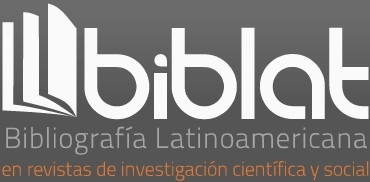The regimens of immanence, between narratology and narrativity
DOI:
https://doi.org/10.35494/topsem.2015.1.33.229Keywords:
narratology, narrativity, immanence, enunciation, regimenAbstract
The article questions the revival of narratology studies in human sciences today and the simultaneous disappearing of semiotic works on narrativity. On this basis, it attempts to analyse this concept of narrativity in connection with the principle of immanence which determines its significance. Various critical approaches of immanence are then studied, between theoretical assumption, refutation, extension or philosophic reformulation. Those approaches allow to draw, beyond the “principle” and the “plans” of immanence, the plural notion of “regimens of immanence”. This one, once defined, is tested through the case of the novel of Cervantes, Don Quixote, which is used as an example and an argument. Between the level of the “story”, which commands the narratologic thickness of the novel, and the level of the “utterance”, which appeals tonarrativity requirements, the “regimens of immanence” reinforce their scientific justification.
Downloads
References
AAGE BRANDT, Per (2014). « Sens et modalité - dans la perspective d’une sémiotique cognitive », en Denis Bertrand, Jean-François Bordron et Verónica Estay Stange (eds.). La négation, le négatif, la négativité, Actes Sémiotiques, núm. 117. Disponible en: http:// epublications.unilim.fr/revues/as/ (non paginé).
COQUET, Jean-Claude (1997). « Formes sémiotiques ». La quête du sens. Le langage en question. París : puf.
___________ (sept. 2011). « Les prédicats somatiques », en Denis Bertrand et Jean-Claude Coquet (dirs.). Comment dire le sensible? Recherches sémiotiques, Littérature, núm. 163. París: Larousse-Armand Colin.
CERVANTES SAAVEDRA, Miguel de (2005). Don Quijote de la Mancha. México: Alfaguara [Edición del iv Centenario].
COURTÉS, Joseph (1976). Introduction à la sémiotique narrative et discursive. París : Hachette Université.
DELEUZE, Gilles et Félix Guattari (1991). Qu’est-ce que la philosophie ? París : Minuit [Versión en español: ¿Qué es la filosofía?, Barcelona, Anagrama, 1993].
FONTANILLE, Jacques (2008). « Formes sémiotiques ». Pratiques sémiotiques. París : puf [Versión en español: Prácticas semióticas, Lima, Universidad de Lima, 2014].
GREIMAS, Algirdas Julien Greimas (1983). Du sens II. París : Seuil
[Versión en español: Del sentido II, Madrid, Gredos, 1989].
___________ et Joseph Courtés (1979). Sémiotique. Dictionnaire raisonné de la théorie du langage. París : Hachette. [Versión en español: Semiótica. Diccionario razonado de la teoría del lenguaje, Madrid, Gredos, 1990].
POLKINGHORNE, Donald (1988). Narrative Knowing and the Human Sciences. Nueva York: State University.
RICOEUR, Paul (1983). « L’intrigue et le récit historique », in Temps et récit 1. « La configuration dans le récit de fiction », in Temps et récit 2, et (1985). « Le temps raconté », in Temps et récit 3. París : Seuil, coll. « L’ordre philosophique » [Versión en español, Tiempo y narración 1. “Configuración del tiempo en el relato histórico”, 1995; Tiempo y narración 2. “Configuración del tiempo en el relato de ficción”, 1995; y Tiempo y narración 3.“El tiempo narrado”, México, Siglo XX I, 1996].
SALMON, Christian (2007). Storytelling. La machine à fabriquer des histories et à formater les esprits. París : La Découverte, coll. « Cahiers libres » [Versión en español: Storytelling. La máquina de fabricar historias y formatear las mentes, Ediciones Península, 2008].
Downloads
Published
How to Cite
Issue
Section
License

Tópicos del Seminario is licensed under a Creative Commons Reconocimiento-NoComercial-CompartirIgual 4.0 Internacional License.














